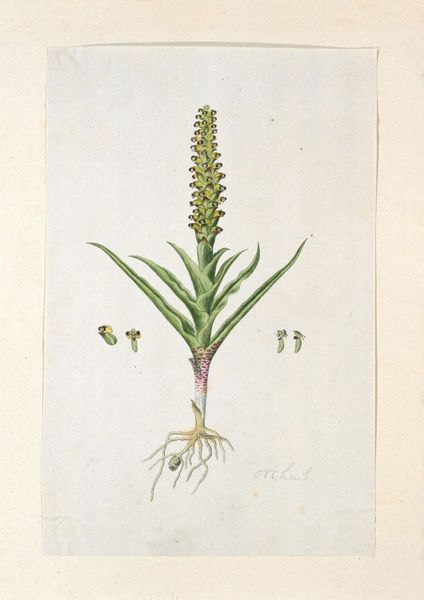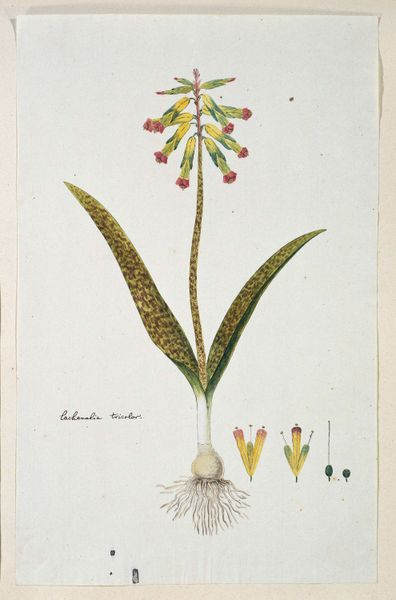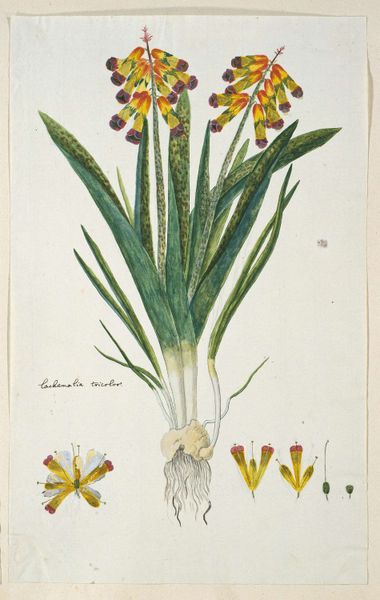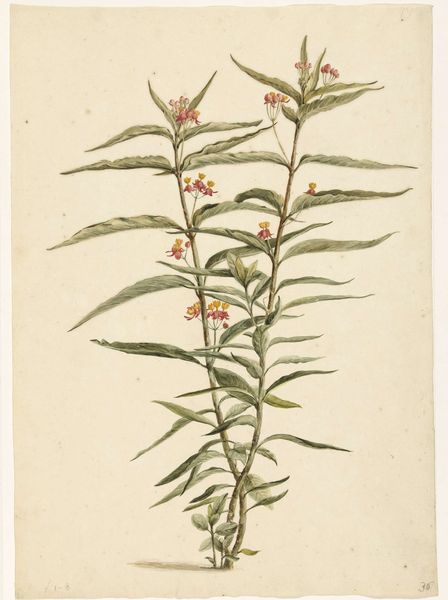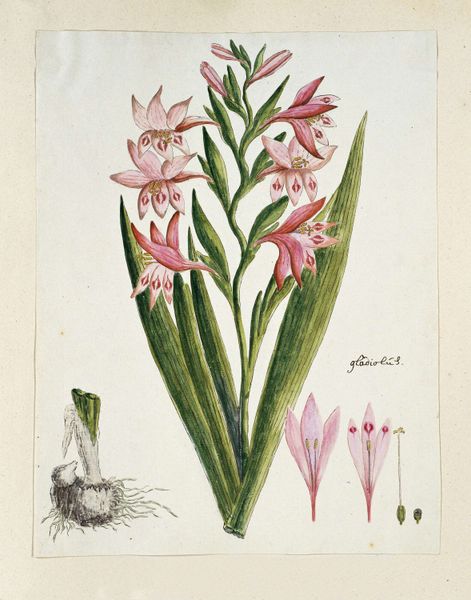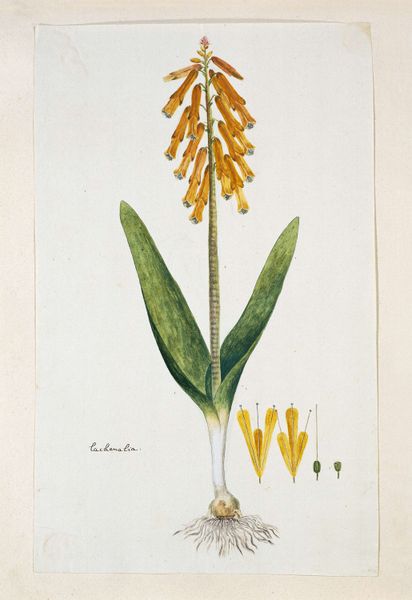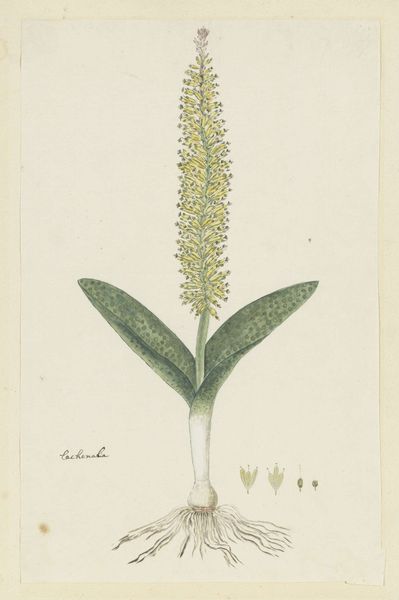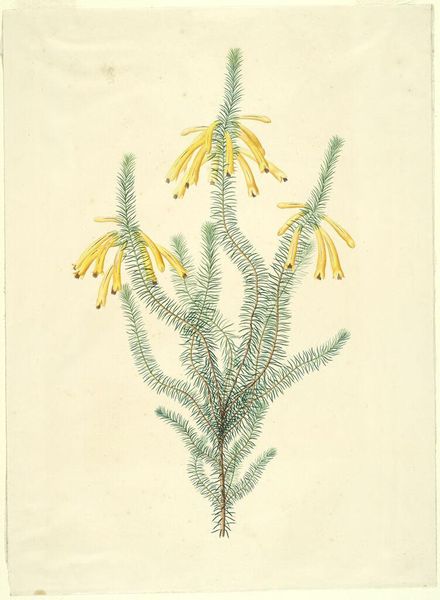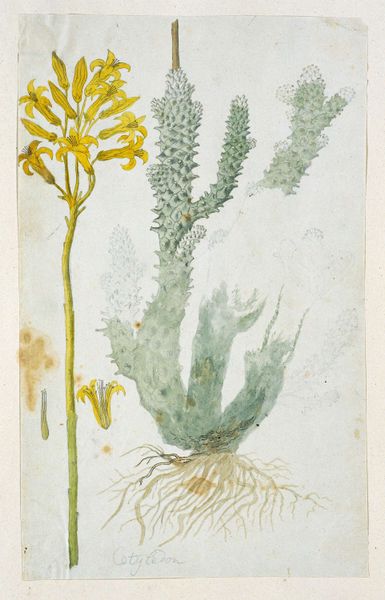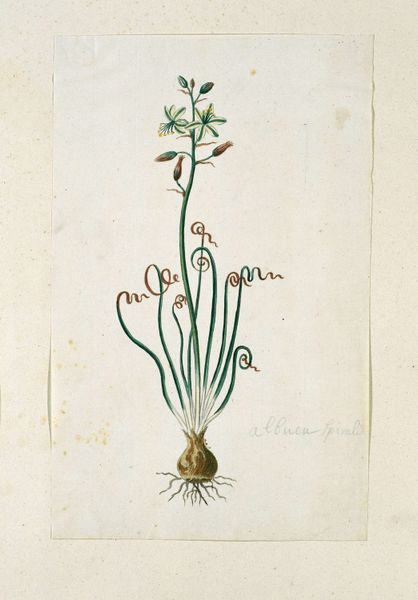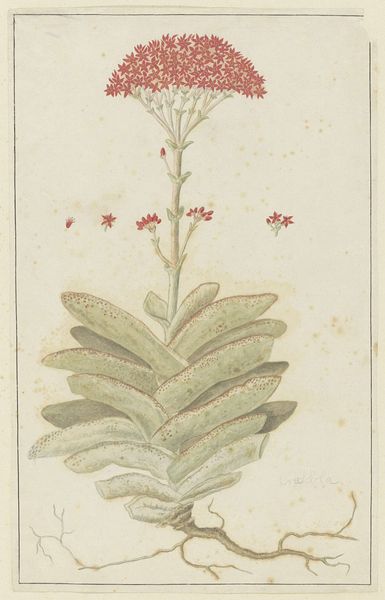
drawing, watercolor, pencil
#
vegetal
#
drawing
#
landscape
#
watercolor
#
pencil
#
botanical drawing
#
watercolour illustration
#
naturalism
#
botanical art
#
watercolor
Dimensions: height 660 mm, width 480 mm, height 304 mm, width 255 mm, height mm, width mm
Copyright: Rijks Museum: Open Domain
This watercolor of the Aloe dichotoma, or Quiver tree, was made by Robert Jacob Gordon in the late 18th century. The plant is depicted with its distinctive yellow flowers tipped with red, springing from a spiky green stem, which are symbols deeply rooted in the cultural memory of the indigenous peoples of Southern Africa. The choice of this tree is particularly evocative, as its hollowed branches have traditionally been used to create quivers for arrows. Consider the quiver: a vessel holding instruments of both life and death. We see echoes of this duality in other cultural artifacts, such as the cornucopia or the Holy Grail. In the collective psyche, the Quiver tree emerges as a potent symbol of resourcefulness and adaptation. Its image, passed down through generations, has evolved from a practical tool to an emblem of survival and cultural identity. This humble tree, rendered in watercolor, becomes a powerful force, engaging us on a subconscious level and connecting us to ancestral memories. It stands as a testament to the cyclical nature of symbols, resurfacing and evolving across time.
Comments
No comments
Be the first to comment and join the conversation on the ultimate creative platform.
